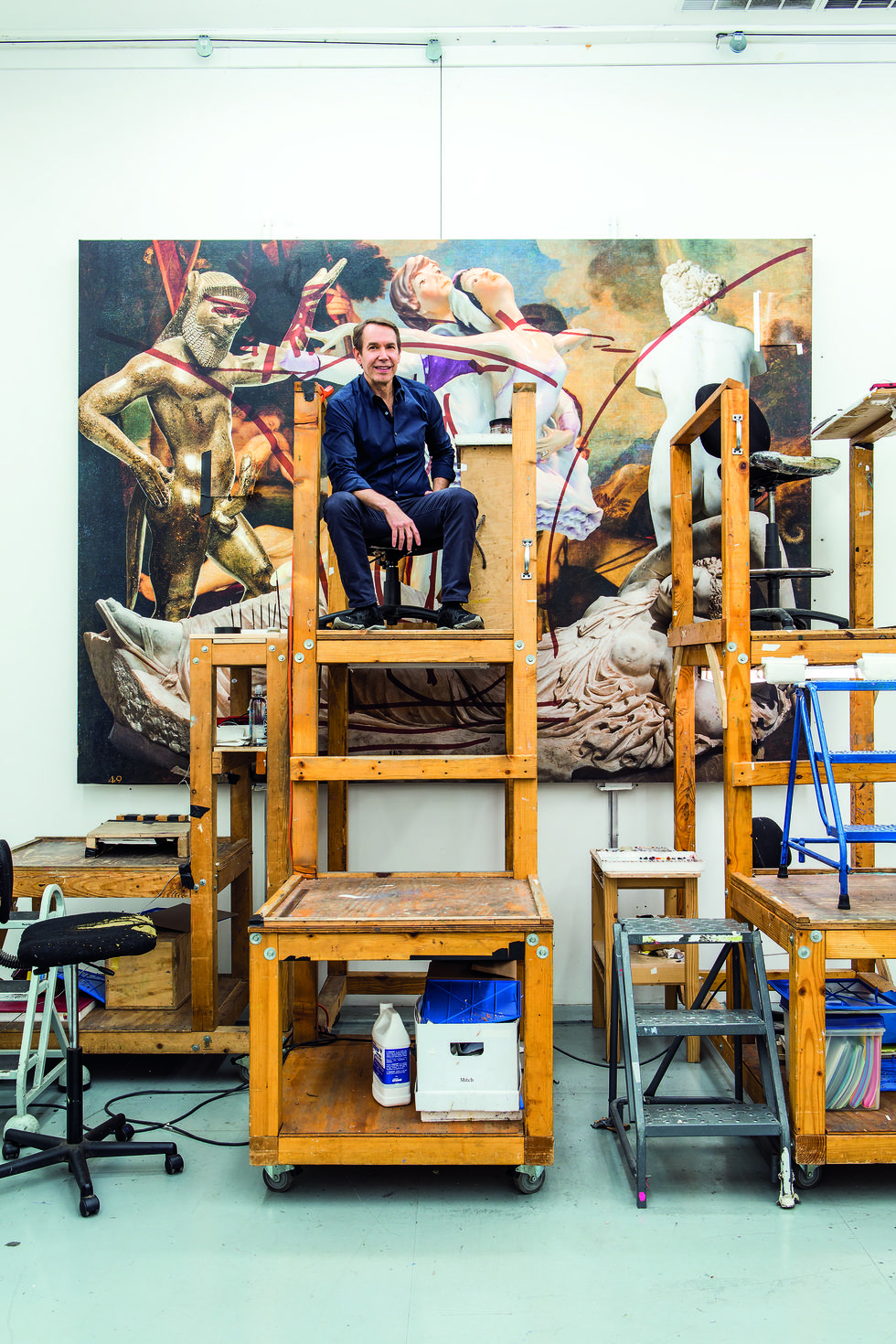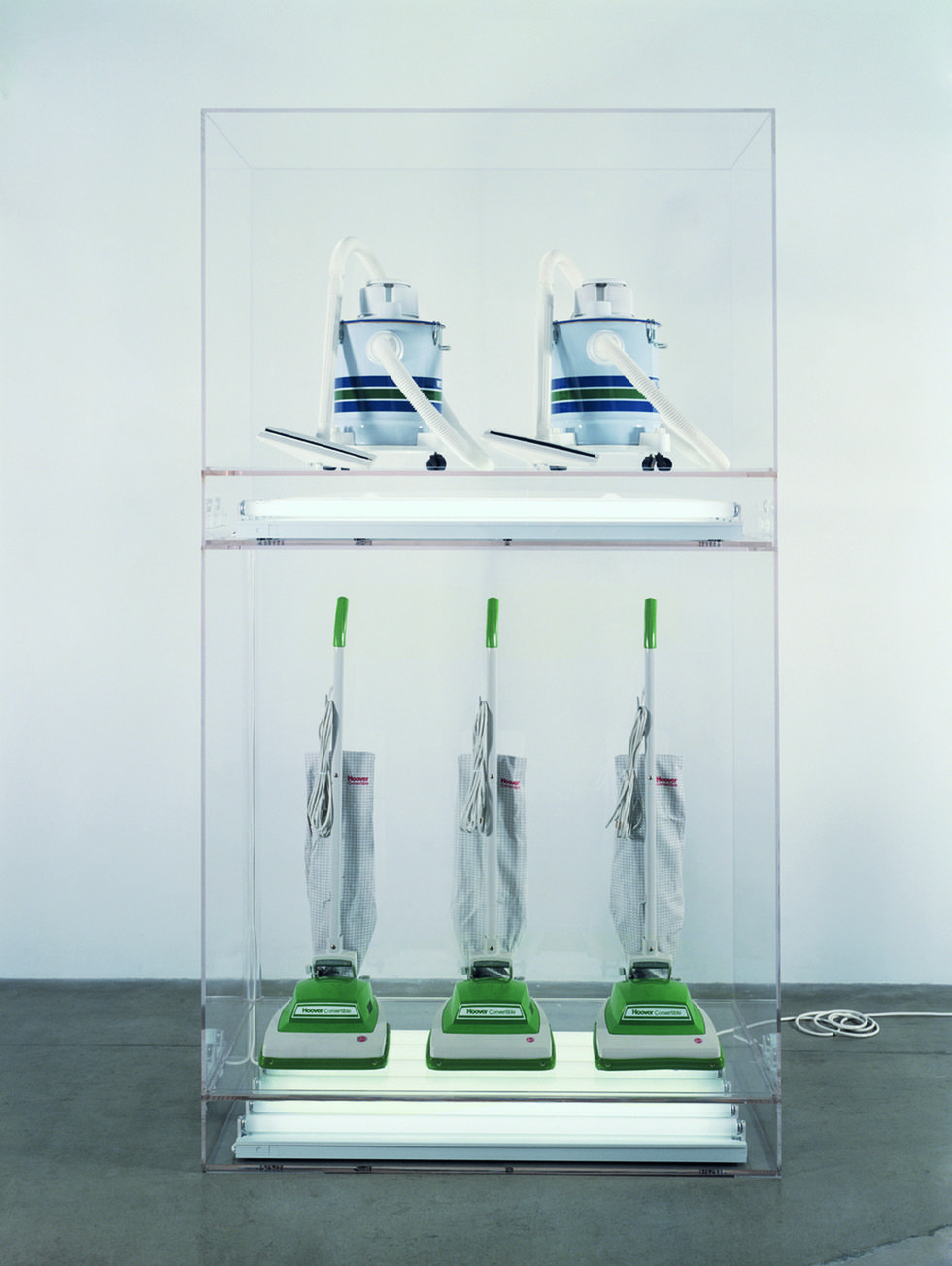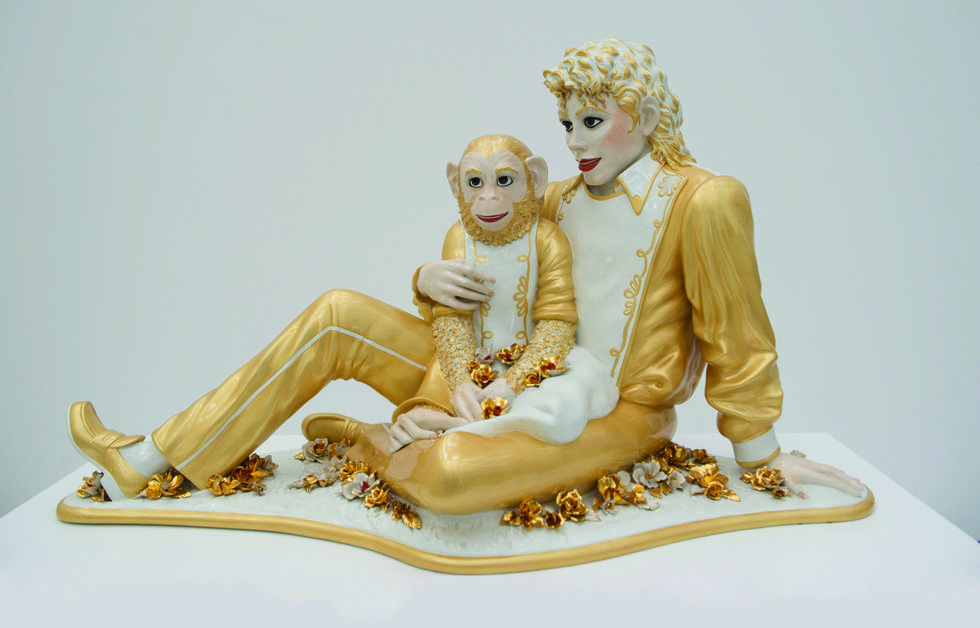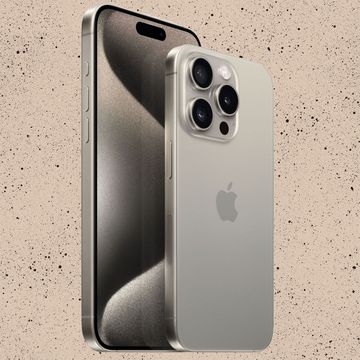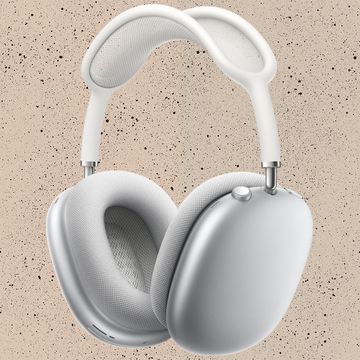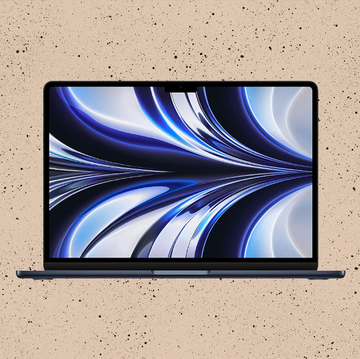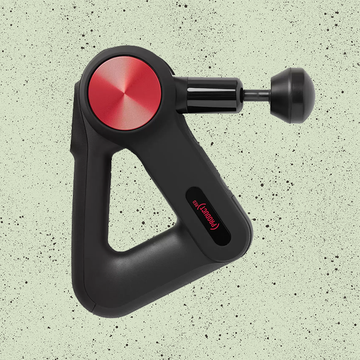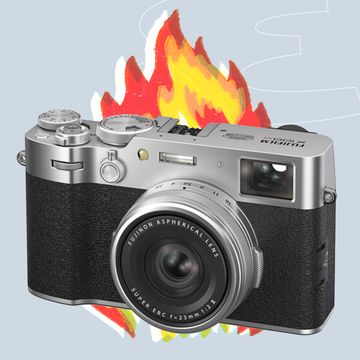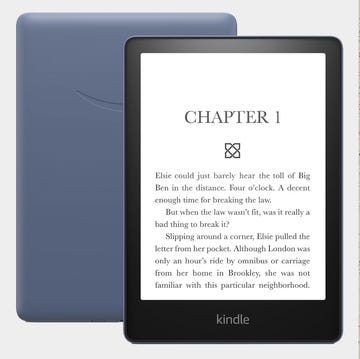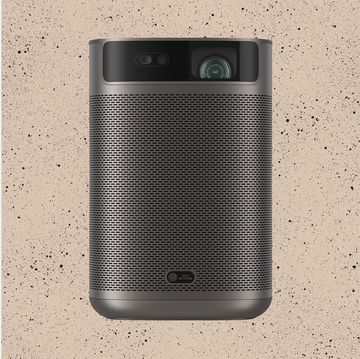When Jeff Koons was in his second year of art school in 1973, his mother read in a magazine that one of his favourite artists, Salvador Dalí, was living at the St Regis Hotel in New York. "So I called the hotel and asked to speak to Salvador Dalí, and they put me through," says Koons. "I told him that I was a fan and would really enjoy the opportunity to meet him, and he told me, 'OK, come to New York this Saturday and I’ll meet you in the lobby at 12 o’clock.'
"So I went to the hotel and at exactly 12 o’clock he showed up in the lobby wearing this buffalo fur cape and a diamond tie clip, carrying a silver cane," Koons continues. "Dalí invited me to meet him later at an exhibition of his work. He asked if I liked the work and did I want some photographs, and I said, 'Sure.' So he posed in front of a painting. I was, of course, very, very nervous, and he said, 'Come on kid — I can’t hold this pose all day.' He’d already had to correct his moustache a few times. He was so generous to me, and I left that evening thinking, 'I can do this. I can be an artist, and wake up in the morning, and think about work, and be part of the avant garde.'"
The story tells us quite a lot about the young Koons. It suggests that he was optimistic enough to think that a famous artist in his late sixties might be persuaded to meet an unknown student, and he had the charm, determination and chutzpah to pull it off. The encounter also reveals that, even then, Koons had a singular vision of art. By the mid-Seventies, Dalí, once revered for his technical virtuosity and experiments with surrealism, was a deeply unfashionable artist, who was derided for courting money and fame by staging seedy publicity stunts. Yet Koons chose to think the best of him.
Looking back, he could have seen Dalí’s decline as a cautionary tale of an artist whose propensity for scandal and showmanship destroyed his critical reputation and overwhelmed his work. Koons, now 64, has been taunted by the very same threat throughout his 40-year career as one of the world’s most famous, expensive, fêted and talked-about artists, and the pre-eminent US artist of our time.
Koons is one of the very few artists whose name is familiar to people who seldom, if ever go to museums. He is equally rare in having produced a number of artworks that they may recognise, such as his giant, joyous Puppy flower sculpture and stainless steel Balloon Dog, the latter of which holds the record for a piece by a living artist, having sold for $58.4m (£40.3m) at Christie’s in 2013. Yet, despite his success, Koons is loved and loathed with equal fervour by the critics and curators who make and break artists' reputations. And their judgements are generally determined by whether or not they believe his art has been fatally tarnished by sensationalism, as Dalí’s supposedly was.
To his champions, who, luckily for Koons, include several of the world’s richest and most profligate contemporary art collectors, his paintings and sculptures of erotica, toys, kitsch, hyper-luxury and pop culture address the pervasive issues of our time with aesthetic and technical aplomb. "Koons is a great boundary breaker in so many areas of contemporary art and society, whether it comes to pushing the relationship between art and popular culture, or his interest in sexuality, or his use of new technologies and fabrication processes," observes Scott Rothkopf, chief curator of New York’s Whitney Museum of American Art, who curated the 2014 retrospective of Koons’ work there. "Few artists are such trailblazers in one area and yet Koons has pioneered so many, always challenging himself and us."
Koons' detractors see those same obsessions as pandering to the basest urges of a neurotically materialistic, hyper-consumerist and sexually exploitative age, and as flagrant exercises in self-enrichment. They also accuse him of pomposity for mixing them with references to art history and classical antiquity. One of his most eloquent haters was the late Robert Hughes, the influential art critic of Time magazine, who described Koons as having "the slimy self-assurance, the gross patter about transcendence through art, of a blow-dried Baptist selling swamp acres in Florida," before admitting, "you can’t imagine America’s slightly depraved culture without him."
Sitting inside the huge New York studio complex by the Hudson River in Chelsea, where he and his staff of 180 work, Koons appears too placable to be the target of such ire. Clad in a navy shirt and trousers with slightly scuffed (or so he complains) black Nike trainers, he looks almost anodyne, until he flashes the goofy grin that has become his trademark, just as Dalí’s spindly moustache and Andy Warhol’s spiky wigs were. His face is lightly wrinkled, as you’d expect of a sexagenarian, but Koons is trim, as he proved by posing naked while weight training for an Annie Leibovitz portrait that accompanied Vanity Fair’s prelude to the Whitney show. He has worked out daily for years, usually listening to Led Zeppelin, his favourite band since his teens.
"There has always been this aspect of my work that makes people either like it or not, but I always want everyone to like it," says Koons. "Not because I want everyone to love me, but because I believe that my motives are pure. I’m trying to share, to the best of my ability, the joy and pleasure, knowledge and enlightenment that I get through art. So if somebody doesn't like it, I’m always a little hurt."
In manner, Koons is chatty, polite and genial, gracefully avoiding questions he does not wish to answer (anything to do with Andy Warhol or fellow contemporary artists) by talking about a subject he prefers, like how much better the work of great artists becomes as they age. From time to time, he courts Pseuds' Corner by soliloquising intensely seriously, but bafflingly, about things that touch him deeply. (Like Led Zeppelin’s music: "It’s not the blues. It’s way beyond the blues. It’s Greek tragedy. You know 'Ooh. Ooh. Yeah. Yeah'? That’s Greek tragedy." And weight training: "My heavy lifting in weights is a metaphor for my heavy lifting in art. I really believe in body and mind. I love how in the ancient world you’d bring the gods into your body.") No wonder Roberta Smith, art critic of The New York Times, once accused him of indulging in "a slightly nonsensical Koons-speak that casts him as the truest believer in a cult of his own invention."
Koons discovered art at a Saturday morning children’s class in York, the historic (in the US sense) city in Pennsylvania where he grew up. "Art was the first thing I found that I was better at than my sister," he recalls. "She was three years older than me, and she could run faster, jump higher, pronounce more words and count better. Art classes gave me a sense of self. And my parents were always so supportive, so from the age of seven I took art classes every Saturday morning."
Koons' work is strewn with references to childhood memories of York, from personal mementoes, like the "travel bar" his parents took on holiday, to local customs, such as the reflective glass "gazing balls" that Pennsylvanians display in their gardens and yards. After graduating from high school in 1972, he enrolled at the Maryland Institute College of Art in nearby Baltimore. "Up until then, my art education had been about the technical tools that enable you to create perspective and shadow and shading, so it was quite superficial," says Koons. "I didn’t understand the real power of art until my first art history class in Baltimore. Then I realised that I’d found an activity that could give me a dialogue with philosophy, sociology, psychology, theology and physics, because it is connected to all human disciplines. Ever since then, I’ve felt like the luckiest person in the world."
In Baltimore, Koons became fascinated by the Chicago Imagists, a group of artists including Jim Nutt and Ed Paschke, who combined the influences of surrealism and Dadaism with pop art, and Koons switched to the School of the Art Institute of Chicago for his final year in 1975. One of his teachers there was Paschke, who hired him as an assistant after he graduated. Koons was happily settled in Chicago until he heard Patti Smith on the radio in 1977, talking about her music and the downtown club scene in New York. "I thought, I want to be part of my generation, I want to be participating, not making paintings that I’d dreamt the night before," he recalls. "So I hitch-hiked to New York the next day and I’ve been here ever since."
Koons joined the army of young artists who were living and working in then-grungy downtown Manhattan, desperately trying to persuade independent galleries to show their work. He made sculptures from mirrors and inflatable plastic flowers like those he remembered from kids' parties in York, and made ends meet by working on the membership desk at the Museum of Modern Art. There, Koons joined a proud lineage of artists, including Dan Flavin, Sol LeWitt and Robert Ryman, who funded their early work by temping at MoMA.
Like them, he seized the opportunity to study the museum’s collection, but proved to be an unusually enterprising addition to the membership desk, decking himself out in gaudy ties and waistcoats to attract visitors' attention. A natural salesman, who had sold sweets door to door as a child, Koons helped to double the number of members, some of whom offered to hire him. "They’d come up and say: 'Jeff, you should work for me.' So I wound up selling mutual funds, door-to-door again."
He soon moved on from mutual funds to commodities. So unusual was it for an artist, particularly one from the downtown art scene, to work on Wall Street, that Koons’ five-year stint in the financial services sector has dominated perceptions of him ever since. Does he regret it? "No!" he laughs. "I was always an artist, and everyone around me knew that. But I needed a higher income to make the work I wanted to make, and I couldn’t do that by selling memberships at MoMA."
Koons ploughed his Wall Street earnings into The New, a series of reconstructed Hoover vacuum cleaners, which were exhibited in a window of the New Museum in 1980. Two years later, he moved in with his parents for six months to save enough money to complete the Equilibrium series, a costlier project that included suspending basketballs in tanks of water. The artist Michael Craig-Martin saw Koons’ work for the first time at the Equilibrium exhibition in 1985. "I happened to be in New York and to be going around little galleries on the Lower East Side, and found this show by Jeff Koons, who I’d never heard of," he says. "I thought it was the weirdest thing I’d ever seen. I had no explanation for the work and couldn’t contextualise it, but it was so striking and memorable that it stayed with me."
Equilibrium established Koons as a promising young artist, and he sold several sculptures. "At a loss," he notes. "You know, just to break in. But I thought that if I kept people involved with my work, it would eventually even itself out." He then produced increasingly ambitious and exuberant pieces, including Rabbit, a 1986 mirrored stainless steel replica of a rabbit inflatable toy, and a 1988 gilded porcelain statue of Michael Jackson cuddling his pet chimpanzee Bubbles. Rabbit remains among Koons' most admired works, while Michael Jackson and Bubbles introduced him to the tabloids. "One of the fascinating things about Jeff is that he works on many different levels," says Julia Peyton-Jones, co-director of the Serpentine Galleries in London where he staged a solo show in 2009. "He deals with the everyday — puppies, balloons, Michael Jackson — things everybody understands. This makes his work appealing to people who know nothing about art, while the art cognoscenti can read it in a very nuanced and sophisticated way."
In 1989, Koons began a new project, Made in Heaven, consisting of sexually explicit sculptures, paintings and billboards of him with Ilona Staller, an Italian porn star known as La Cicciolina, whom he had pursued after seeing her in a magazine. Even previously loyal art critics were appalled, although the tabloids were delighted. Koons married Staller in 1991 in Budapest, and they lived in Munich before moving to New York, where their son Ludwig was born in 1992. It was in Germany that he made Puppy, a work so simple, spectacular and endearing that even his harshest critics struggle to dislike it. But he and Staller separated in 1993. Koons nearly bankrupted himself in a custody battle for Ludwig, while struggling to complete the Celebration series, a collection of archetypal works inspired by a calendar year. By the late Nineties, Celebration was still unfinished, Koons faced financial ruin and risked being dismissed as a relic of the art world’s Eighties excesses.
The turning point came in 2000 when Puppy was exhibited at the Rockefeller Center in New York, reminding the art world of how appealing his work could be. The following year, Michael Jackson and Bubbles sold for $5.6m (£3.9m) at auction, cementing his bankability among collectors. Koons had also stabilised his private life. His daughter, who he had with a girlfriend at art school, was able to find Koons in New York. Shannon, now 40, continues to share her life with her father. Koons also married Justine Wheeler, a studio assistant, who had stood by him throughout his financial woes.
Koons then made a steady stream of pieces in which he explored more of his passions, from comic-book characters such as Popeye and the Incredible Hulk, to Old Master paintings and classical statuary, in addition to making mirror-polished stainless steel replicas of inflatables in the shapes of lobsters, monkeys, hearts and whatever else took his fancy.
Technically, his work has become ever more elaborate. Koons is renowned for working with the most accomplished fabricators and artisans in their fields, from Los Angeles balloon artists (or 'air artists', as they prefer to be called), to the Louvre Museum’s plaster workshop. He insists on such high standards that he destroys completed works that, he feels, have failed to meet them. "Jeff has an extreme sense of craft," notes Craig-Martin. "His work is an amazing combination of apparently banal imagery and super-craftsmanship. That’s why I’ve never believed that he is motivated by money. An artist who is would cut corners. He does the opposite."
Many of the assistants working at the banks of computers in Koons’ studio, flanked by tables laden with inflatable flowers and whiteboards with “3D Tasks”, are wrestling with the production logistics. Others prepare for upcoming exhibitions, like The Artist, a group show featuring Koons that opened at the Royal Academy in Stockholm in February, and public art projects, such as Train, a proposal to suspend a replica 1943 Baldwin 2900 steam locomotive from a 161ft crane, that he began in 2003. Originally, the LA County Museum of Art planned to commission and exhibit Train, but the process was so arduous that it now seems likelier to be installed beside the High Line in New York.
Most of Koons’ assistants are young artists, whose income from his studio subsidises their own work, just as the money he made at MoMA and on Wall Street supported him, but one colleague has been with him for more than 25 years — studio manager Gary McCraw.
"It is fascinating to observe Jeff and Gary’s relationship, because they’re both so wholeheartedly committed to making the art that it draws you in, too," says Peyton-Jones. "When you work with them there is a Three Musketeers' sense of 'all for one, one for all', which is very enjoyable."
McCraw and the studio team also liaise with Koons' commercial galleries, which currently include the corporate art colossus Gagosian, its increasingly muscular younger rival David Zwirner and Sonnabend, which first showed Rabbit in 1986. Commercial galleries usually insist on representing artists exclusively in particular countries, which helps them to control the pricing, flow and placement of the art and enhances their clout with collectors. But Koons works with several galleries as well as retaining direct relationships with the super-rich collectors (mostly gutsy 'masters of the universe' types such as US casino magnate Steve Wynn, US mega-investor Steve Cohen and French luxury mogul François Pinault) who place his sculptures like trophies in the grounds of their country estates or in corporate foyers.
To secure a new piece by Koons, collectors sometimes contribute to the production costs, for example, by investing several million dollars to reserve the right to buy one of a new edition of sculptures sight unseen. They do so in the expectation that the value of the finished piece will increase and, should they choose to, they could sell it at a profit, a practice known as 'flipping'. As a result, Koons collectors have as keen a vested interest in sustaining the highest possible prices for his work as his galleries. The marketability of most art-world stars falls eventually, as Damien Hirst has discovered in recent years. So far, Koons has avoided that fate, thanks partly to his continued energy and ambition, but also to his collectors' loyalty.
Typically, Koons' studio produces up to 20 sculptures and seven paintings every year. He works there most days when in New York, sharing a space with McCraw and their assistants. A reproduction of one of his recent acquisitions — a flagrantly sensual mannerist oil painting by 16th century Flemish artist Bartholomeus Spranger, which will soon join his collection of Courbets, Magrittes, Manets, Picassos and Poussins — is propped up against a wall of shelves stuffed with art books (plus Jimmy Page’s memoirs) and tiny 3D-printed models of Koons’ sculptures and personal knick-knacks, such as a mildly obscene ashtray of his grandfather’s that he played with as a child. Soon, the studio is to move to a larger complex Koons is building on West 52nd Street in Hell’s Kitchen, as the Chelsea site is to be redeveloped.
During the week, Koons lives in an Upper East Side townhouse with Justine and their six children, five boys and a girl. On Fridays, they climb into the 'Koonsmobile' — a customised vehicle he describes as "a stretched Sprinter van with captain’s chairs and a big television" — to spend the weekend at the farm near York where his maternal grandparents lived during his childhood. Shannon, her husband and their three children, Koons’ first grandchildren, often join them there. He bought the farm several years ago, and has restored it, painting the buildings in traditional local shades of red, yellow and white, and buying more land to expand the property from 40 to 800 acres.
Koons clearly relishes family life, and revels in the opportunity to share his younger children’s early years. "Last night, I was playing baseball down in the basement with three of my sons, and I couldn’t have had a better night," he recounts. "Such joy and pleasure, with our youngest, who’s three now, running after us with this bat."
Childhood remains a rich source of inspiration for Koons, although his passion for art history has loomed ever larger in recent works, like the Gazing Ball paintings he exhibited late last year at Gagosian in New York. Each piece consisted of a hand-painted copy of one of Koons’ favourite Old Master paintings, including works by Courbet, El Greco, Manet, Titian and Turner, with a dark blue glass gazing ball placed on a shelf attached to it. Gagosian billed the project as Koons' "dialogue with artists of the past", but some critics accused him of staging a shameless attempt to aggrandise himself by association with the greatest figures in art history.
Koons is characteristically ebullient about it all. "I’m really proud of the work," he says. "It is as profound as you allow it to be. The more you open yourself up to it, the more it reveals to you. You know, an aspect of childhood is about being open to the things that you love, but kids have that enjoyment kicked out of them. They come to believe in hierarchies: that some things are good, and can be enjoyed, but others are bad. I’m always trying to make work that is a metaphor for complete acceptance."

